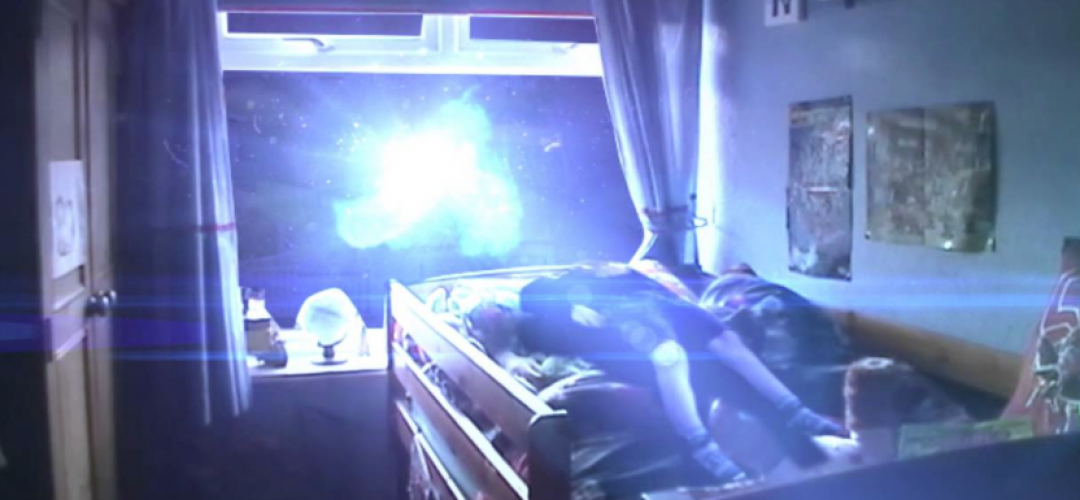In some cases that involve an apparent disturbance to the soil, there may also be an apparent injury to vegetation. Velasco stated that four such cases have been investigated by GEPAN/SEPRA: the “Christelle” case of November 27, 1979; the “Trans-en-Provence” case of January 8, 1981; the “Amarante” case of October 21, 1982; and the “Joe le Taxi” case of September 7, 1987.
In the Christelle case, in which grass was flattened in a uniform direction, plant physiology analysis was subsequently carried out by Professor Touze of the Laboratoire de Physiologie Végétale de l’Université Paul Sabatier (the Center for Plant Physiology, Paul Sabatier University), Toulouse. The Trans-en-Provence case will be discussed later in this section. In the Amarante case, that took place near Nancy, grass was lifted up, the amarante leaves withered, and the amarante fruit seemed to have exploded. The plant physiology was examined by Professor Abravanel , also of the Laboratoire de Physiologie Végétale de l’Université Paul Sabatier (the Center for Plant Physiology, Paul Sabatier University), Toulouse. In the Joe le Taxi case, birch leaves were affected by the incident, and a biochemical analysis was carried out by Professor Michel C. L. Bounias of the Biochemistry Laboratory at INRA (National Institute of Agronomy Research), University of Avignon.
In the Trans-en-Provence case of January 8, 1981, discussed also in the previous section (Bounias, 1990; Vallee, 1990; Velasco, 1990; see Section 15), the Gendarmerie took one sample 1.5 meters from the center of a ground trace on January 9 and another sample, 20 meters from the center, on January 23. On February 17, 1981, investigators from GEPAN/SEPRA visited the site and took a series of samples beginning at the center of the ground trace and ending 10 meters from the center. Bounias examined the samples in his laboratory. The principal procedure for biochemical analysis was that of determining the chromatograms of the pigments. This yielded information for a number of biochemical components (chlorophylides; xanthines; oxychlorophylls; lutein; chlorophyll A; chlorophyll B; pheophytins; and ß carotene).
In samples taken from the periphery of the ground trace, the chlorophyll A content had been reduced by 33%, the chlorophyll B content by 28% and the pheophytin content by 31%. Bounias also found that the ß carotene content had been reduced by 50-57% and the violaxanthine content by 80%. The above changes, which normally occur as the result of aging of a plant, were found both in the samples removed by the Gendarmerie within one day of the event, and by the samples taken by the GEPAN/SEPRA investigators 40 days after the event. As one may see from the article by Bounias (1990), the biochemical changes show a strong correlation with distance from the center of the event. It appears that the magnitude of the effect is associated with a specific quantity (the difference in free enthalpy) associated with the biochemical change. According to Bounias, the glucide and amino-acid content of very young leaves had been changed to become nearer the content characteristic of old leaves.
Bounias carried out certain experiments to try to determine what form of trauma may have been responsible for these biochemical changes. As a toxicologist, Bounias rejected the hypothesis that the changes could have been caused by a deliberate act involving chemical poisons. Bounias also found that some of the changes could have been caused by powerful microwave radiation. However, microwave radiation by itself would not explain the photosynthetic breakdown or certain other characteristics of the injuries. Bounias found no evidence of effects that one might expect to be produced by ionizing radiation. This is consistent with the fact that there was no trace of radioactivity at the site.
Velasco also reported the GEPAN/SEPRA investigation into the “Amarante” case that occurred at Nancy on October 21, 1982. The witness, who is a biologist, reported that an ovoid object descended into his garden but did not descend lower than 1 meter above the ground. The witness observed the object for 20 minutes before it took off vertically into the sky. The witness did not hear any sound or feel any heat during the encounter, nor were there traces on the ground. However the witness reported that, just before the object departed, the grass blades stood up straight. Subsequent investigations showed that this phenomenon could be reproduced in the laboratory by using very intense electric fields (several tens of kV/m).
The GEPAN/SEPRA investigators found that the amarante plants located near the object had become desiccated whereas similar plants further away were in normal condition. The fruit of plants from the vicinity of the object looked as if they had been cooked. Further biochemical analyses of the samples gave results consistent with what one would expect of plants that had been dehydrated.
The panel was impressed by the detailed information that can be obtained by laboratory investigation of samples of vegetation taken from the location of a claimed UFO incident. It appears that a great deal more could be done in the way of laboratory experiments to study the effects of various kinds of radiation and other forms of trauma upon vegetation. One should also examine the kinds of effects that could be produced by techniques that might be involved in a hoax, such as chemicals, heat from a blow torch, etc. Such studies would help identify a hoax, if it has been perpetrated, or the studies may lead to the conclusion that a hoax is a very unlikely explanation of the traces. In the latter case, it may or may not be possible to identify the type of technological device that would produce the radiation, or combination of radiations, necessary to produce the identified injuries to the vegetation.
